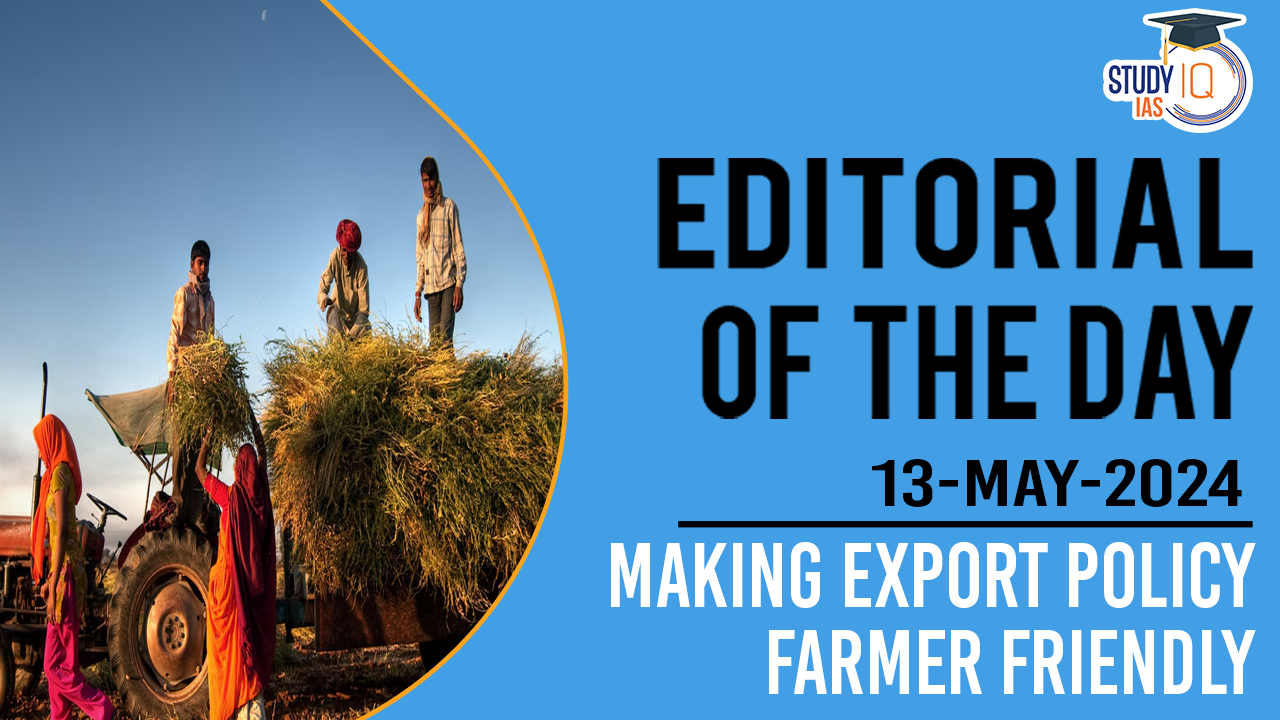Table of Contents
Context
- India’s agricultural exports decreased to $48.9 billion in 2023-24, an 8% drop from $53.2 billion in the previous year.
- This decline is notably below the target of $60 billion set by the government for 2022.
| Key Facts |
|
Key Commodities in Agri-Exports
Major Products
- Rice leads with a value of $10.4 billion, accounting for 21% of total agri-exports.
- Marine products at $7.3 billion (15%),
- Spices at $4.25 billion (9%),
- Bovine meat at $3.7 billion (8%),
- Sugar at $2.8 billion (6%).
Factors Influencing Agri-Exports
- Global Market Prices: Fluctuations in global prices heavily influence India’s agricultural exports. High global prices typically boost exports, as seen during the UPA government’s tenure.
- Export Policies: Recent export restrictions and bans on commodities like wheat, rice, sugar, and onions have significantly affected exports. These measures are often enacted to control domestic food inflation.
Specific Policy Changes and Impacts
- Export bans on wheat and sugar were initiated in mid-2022.
- In July 2023, exports of non-basmati white rice and broken rice were prohibited.
- Additional restrictions included a 20% duty on parboiled non-basmati rice exports and a minimum export price (MEP) on basmati rice, which was adjusted from $1200/tonne to $950/tonne by October 2023.
- A 40% duty and an MEP of $550/tonne were imposed on onion exports.
Economic Implications of Export Policies
- Rice Export Dynamics: Despite a 27% reduction in rice export volumes, the value only decreased by 6% due to international price surges triggered by India’s export restrictions. This suggests that optimal export quantities could maximise revenue without excessive price reductions.
- Agricultural Subsidies and Environmental Concerns: High subsidies for power and fertilisers, particularly in rice cultivation, pose ecological risks due to excessive groundwater usage. This indirectly contributes to the export of substantial volumes of water.
Recommendations
- Strategic Investment: To increase agricultural exports sustainably, investments are essential in R&D, irrigation, and resource-efficient farming practices like precision agriculture.
- Balanced Export Policies: Adjusting export taxes and lifting bans, particularly on rice, could stabilise export revenues and market prices, benefitting both farmers and the economy.
- Addressing Farmer Issues: The case of onion exports illustrates a policy bias towards consumers, often at the expense of farmers’ potential earnings. Adjusting these policies could help improve farmer incomes and stabilise domestic markets


 Indus Water Treaty 1960 Suspended by Ind...
Indus Water Treaty 1960 Suspended by Ind...
 5 Years of SVAMITVA Scheme and Its Benef...
5 Years of SVAMITVA Scheme and Its Benef...
 Places in News for UPSC 2025 for Prelims...
Places in News for UPSC 2025 for Prelims...





















